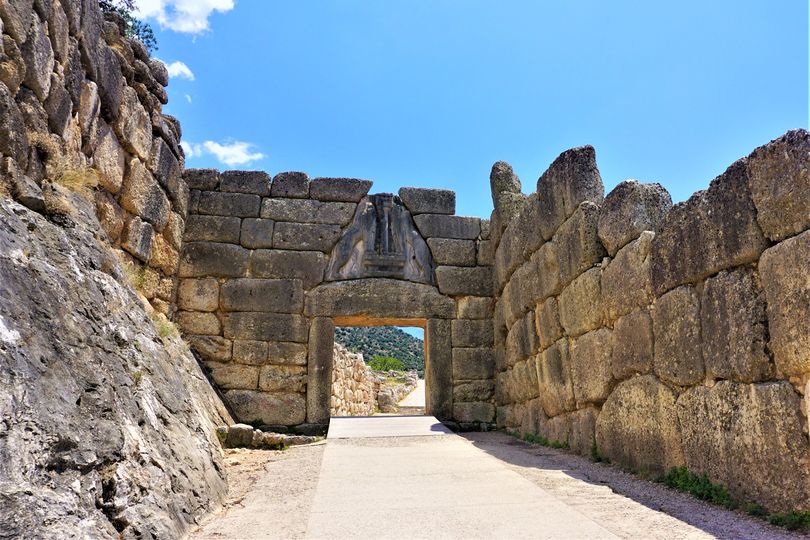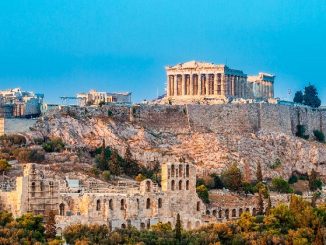In the rugged landscape of southern Greece, amidst the remnants of an ancient citadel, stands the Lion Gate – a monumental entrance to the Bronze Age stronghold of Mycenae. This imposing structure, erected around 1250 BC, serves as a tangible link to the rich cultural heritage and architectural prowess of a bygone era. Join me as we embark on a journey to explore the history, significance, and enduring legacy of the Lion Gate, a marvel of Mycenaean civilization.

A Gateway to the Past: The Lion Gate stands as a sentinel guarding the entrance to the citadel of Mycenae, its towering walls and massive stone blocks evoking a sense of awe and wonder. Constructed during the thirteenth century BC, this formidable structure served as both a defensive fortification and a symbolic threshold between the mundane world and the realm of gods and heroes. Above the entrance, a relief sculpture of two lionesses in a heraldic pose commands attention, their stoic gaze bearing witness to the passage of time.
Monumental Sculpture: The Lion Gate is not only a feat of engineering but also a masterpiece of Mycenaean sculpture. The relief depicting the lionesses, rendered with remarkable skill and detail, is the sole surviving monumental piece of Mycenaean sculpture and the largest surviving sculpture in the prehistoric Aegean. Its enduring presence atop the gate serves as a testament to the artistic ingenuity and cultural sophistication of the Mycenaeans, whose legacy continues to inspire awe and admiration.
An Icon of Ancient Greece: The Lion Gate holds a special place in the annals of ancient Greek history and archaeology, as it is the only monument of the Bronze Age to bear an iconographic motif that survived without being buried underground. Its significance extends beyond its role as a defensive structure, symbolizing the power and prestige of Mycenae and serving as a focal point for religious rituals and ceremonies. For centuries, it has captured the imagination of scholars, artists, and travelers alike, drawing them into the mysteries of Mycenaean civilization.
Ancient Discoveries and Modern Insights: The Lion Gate is just one example of the countless ancient discoveries waiting to be unearthed around the world. From hidden tombs to lost cities, each archaeological find offers a window into the past, enriching our understanding of human history and culture. As we marvel at the wonders of the Lion Gate and other ancient sites, we are reminded of the importance of preserving and studying our shared heritage for future generations to explore and appreciate.
Conclusion: The Lion Gate stands as a symbol of the enduring legacy of Mycenaean civilization and the mysteries that continue to captivate and inspire us today. As we stand in awe of its monumental presence and intricate carvings, we are transported back in time to an era of heroes and legends, where gods and mortals walked the earth in harmony. So, the next time you find yourself in southern Greece, take a moment to visit the Lion Gate and experience the majesty of Mycenae firsthand.


